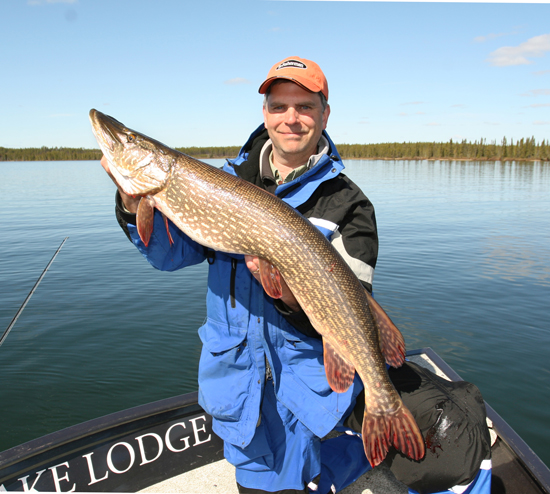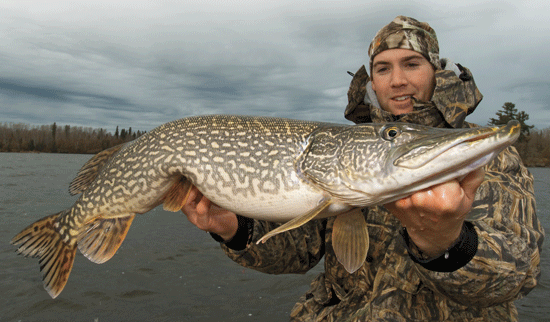Spring unveils prime opportunities for pike enthusiasts, presenting the Prespawn and Postspawn periods as optimal windows for landing impressive catches. The season brings forth not only trophy-sized pike but also a plethora of spirited fish ranging from the teens to the smaller, yet lively, snot-rocket specimens. From the thaw until pike transition to their summer habitats, a diverse set of patterns proves effective.
During the early stages of spring, pike migrate into tributaries, bays, and interconnected sloughs, even as the main lake remains cloaked in ice. Pike spawning activity typically occurs when water temperatures rise into the mid-40°F range, either just before or after the ice retreats, varying based on the specific body of water and prevailing weather conditions.

A strategic approach involves targeting pike in funnel areas that concentrate their movement. Key locations include major structures such as channel edges, points, and old weedlines, as well as subtle underwater features like minor depth changes.
While proximity to the main lake can yield excellent results, In-Fisherman Editor In Chief Doug Stange suggests exploring inland spots. According to Stange, “Pike progressively move farther inland, transitioning from large bays to smaller bays, backwaters, cuts, and accessible creeks.”
In locations like North Dakota’s renowned Devils Lake, Guide Jason Feldner focuses on areas where current enters the main lake or flows through narrow passages between large sloughs and bays. “Channels, coulees, feeder streams—anywhere snowmelt runoff enters or traverses the system can be productive,” Feldner explains, highlighting mid-April to May as prime fishing time.
Before ice-out, Feldner employs a shore-fishing approach, positioning himself around inflow edges. As the last ice recedes, he often shifts to boat fishing while still keeping shore-fishing as a viable option. His successful strategy hinges on a combination of deadbait and casting tactics.
“Using deadbait under a bobber proves effective, producing numerous pike, including trophy catches,” Feldner attests. His preferred setup includes a 7-inch, unweighted Little Joe Pole Float with a high-visibility feature, positioned above a #6 treble hook on a 12-inch steel leader. A 1/8- to 1/4-ounce split shot is pinched on the mainline just above the leader.
Feldner recommends using 10- to 12-inch smelt whenever available, otherwise opting for smelt or herring in the 6- to 10-inch range. His rigging technique involves removing the treble hook, inserting the shank upward through the baitfish’s belly, and securing the hook eye at the back. This simple yet deadly setup can be conveniently stored for the next day by placing the hook and bait in a plastic bag.

Adjusting the bobber stop to position the bait approximately 18 inches off the bottom, Feldner advises casting the setup into slack water just beyond the main current and letting it sit. When a pike takes the bait, he recommends freeing the spool until the bobber halts for a few seconds before setting the hook.
In regions where two lines are permitted, Feldner favors a casting approach with his second rod. Employing medium-heavy spinning gear, he slow-rolls a jig-and-swimbait combination, utilizing a 1/4- to 3/8-ounce Lindy Jig paired with a 3½- to 5-inch YUM Money Minnow in enticing bluegill or clown colors.
Images/Source: In-Fisherman





